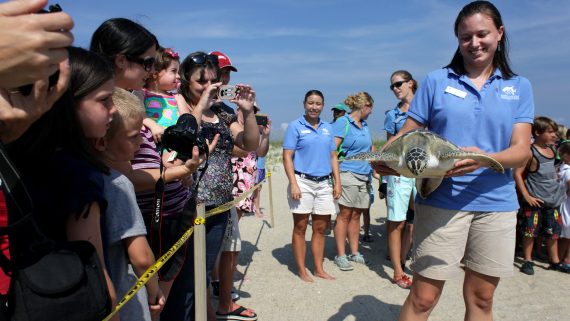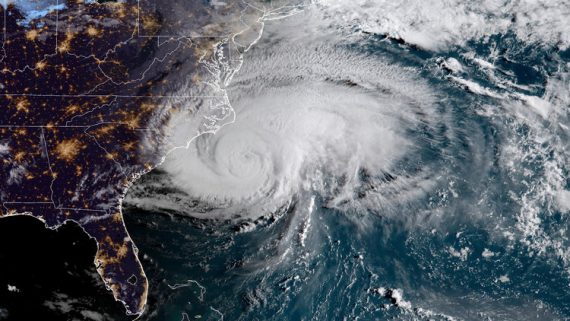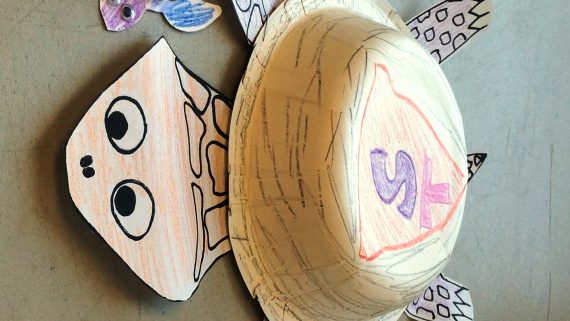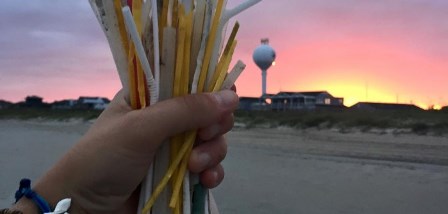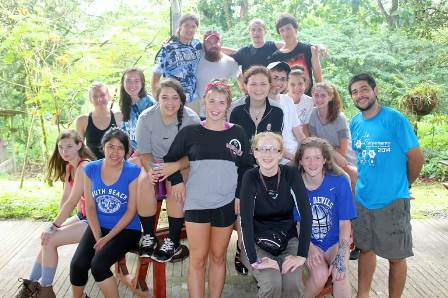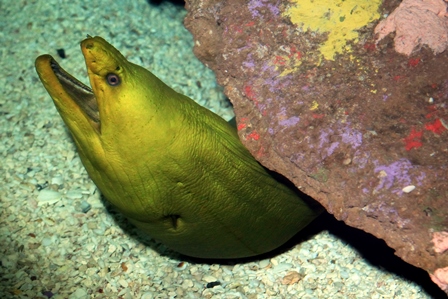Out in the Field
This week, we are hearing from a familiar face, our very own Megan! Megan worked as an Educator at the NC Aquarium at Fort Fisher for many years and is now pursuing a new adventure at NC State University. She is still finding ways to learn about sea turtles and this week she tells us about her adventure with green sea turtles in Mexico.
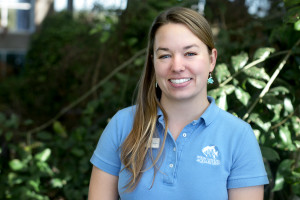
Megan is a former Education Program Specialist
In March I had the opportunity to travel to Baja, Mexico with Ecology Project International (EPI) to do fieldwork with green sea turtles. We traveled to La Paz and then to Magdalena Bay where we tent camped in the dunes for a week. Ecology Project International partners trains local fishermen to collect data on sea turtles they encounter when fishing. The fisherman know the water and the best places to find turtles. Another benefit of partnering with the local fishermen is to help change their attitudes towards eating sea turtles. After training, most of the fishermen become protective of sea turtles and try to change their local culture of eating turtle.
In the area of Magdalena Bay where we traveled, Don Jose is responsible for sea turtle monitoring. In our first day, we met with Don Jose to learn about the tools he uses and the data he collects.
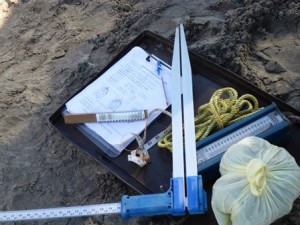
Don’s tools to collect data on sea turtles
When sampling for turtles, Don Jose goes out early in the morning and sets a special net. The net is made into sections rather than one whole piece. This way, if a turtle is caught in the net, it can swim towards the surface and bring the net up to the surface as well. Don Jose checks the net for turtles every two hours. When he finds one, he gently pulls it onto the boat to collect data.
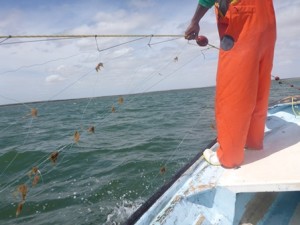
This special type of net has gaps in it so sea turtles can escape
The monitor is responsible for collecting data on the size and health of each turtle. They use a form to collect all of the data. Then they weigh and measure the turtles in the same way we do at the aquarium. They check for an identification tag. If the turtle does not have one, Don Jose is responsible for adding one and registering the turtle. Then the turtle is gently released back into the water.
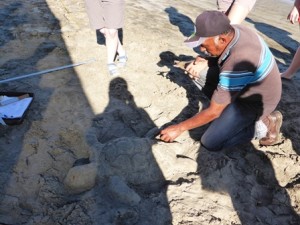
Don shows the group how to tag a sea turtle
Although Don Jose used his 50 years of expert knowledge to look for a turtle, we did not find any on our trip. He said it was due to an algal bloom, strong high tides and a westerly wind. All of these things worked together to keep the turtles out of the bay. Don Jose was very disappointed he was not able to find a turtle for us. However, we know sometimes when you do field work, you don’t find the animal you are looking for. We were glad for the opportunity to meet Don Jose and learn more about his work. It was a lot of fun to learn about the process of monitoring turtles in the wild, even if the only turtles we measured were the sand ones we built. I will just have to go back again some day.
The NC Aquarium at Fort Fisher has also traveled with EPI; two staff members led a group of teen volunteers to Costa Rica to study leatherback sea turtles last summer. Both Costa Rica and Mexico have different geography, culture, and sea turtle conservation strategies. Check out our lesson plan Let’s Compare and Contrast that makes similar comparisons with North Carolina and Belize.
Here in NC our hatchlings are still growing! Turtle A now weighs 1067 grams and measures 18.9 cm long while Turtle B weighs 977 grams and measures 17.7 cm long. Use this week’s updated hatchling measurements for our Hatchling to Yearling lesson plan.



